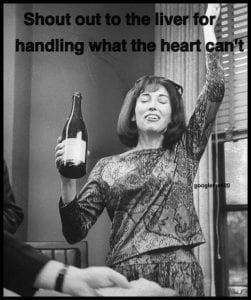Bubbly, fruity drinks are amongst most women’s favorite type of alcoholic beverages. Often associated with women are pink, girly drinks, a booming market where the alcohol industry is spending billions of dollars developing and marketing drinks geared towards women. According to the National Institute of Alcohol Abuse and Alcoholism (NIAAA), Women’s drinking patterns are significantly different from men’s – especially when it comes to how much and how often they drink. It is has concluded that women’s bodies react differently to alcohol than men’s bodies due to metabolism and other bodily mechanisms. That means women face more particular health risks from alcohol compared to their male counterparts.
Drinking Levels among Women
According to the Center for Disease Control (CDC), the following statistics have supported a peak interest in research related to the rise of excessive alcohol use and risks to women’s health:
• Approximately 46% of adult women report drinking alcohol in the last 30 days.
• Approximately 12% of adult women report binge drinking three times a month, averaging five drinks per binge
• Most (90%) people who binge drink are not alcoholics or alcohol dependent
• About 2.5% of women and 4.5% of men met the diagnostic criteria for alcohol dependence in the past year
*Statistics obtained from the CDC fact sheet on excessive use and risk to women’s health*
So Why Do Women Face Higher Risks?
Research has shown that women start to have alcohol-related problems sooner and at lower alcohol volumes than men and for several reasons (NIAA,2017). Women tend to have less water in their bodies than men, meaning that after a woman and a man of the same weight drink the same amount of alcohol, the woman’s blood alcohol concentration (BAC) will tend to be higher, putting her at greater risk for harm (CDC, 2016). Amongst these reasons and others, women have become more susceptible than men to alcohol-related organ damage and trauma resulting from traffic crashes and personal violence (CDC,2016).
Health effects
Liver damage
Women who regularly misuse alcohol are more likely to develop alcoholic hepatitis, and liver scarring and shrinkage called cirrhosis (NIAA 2017). Loft et all, released a study that has been cited by many health organizations on the Increased susceptibility to liver disease in relation to alcohol consumption in women. They concluded that results support the concept that women may develop similarly, and sometimes even more severe, liver disease after use of less alcohol than men, the apparent difference in susceptibility to alcohol may be partly explained by differences in the volume of distribution ( Loft S, Olesen KL, Dossing M, 1987).
Heart Disease
Studies have shown that women who drink excessively are at increased risk for damage to the heart than men even for women drinking at lower levels (CDC, 2016). Cardiomyopathy and myopathy are as common in female alcoholics as in male alcoholics; these findings indicate that women are more sensitive than men to the toxic effects of alcohol on striated muscle (Urbano-Marquez A, Estruch R, Fernandez-Sola J, Nicola JM, Pare JC, Rubin E, 1995).
Brain Damage
NIAAA documents that research suggests that alcohol misuse produces brain damage more quickly in women than in men. Girls who drink in their adolescent years may be more vulnerable to brain damage than teen boys who drink, and women have become more susceptible than men to alcohol-related blackouts; periods of memory loss of events during intoxication without loss of consciousness (NIAA, 2017).
There are many other health conditions affected by excessive alcohol use that affect women. For more information, the CDC has produced a Fact sheet listing more statistics associated with women and excessive alcohol use listed here (https://www.cdc.gov/alcohol/fact-sheets/womens-health.htm).
You should always drink responsibly, which means abiding by the NIAAA guidelines for moderate drinking, never getting behind the wheel while intoxicated and avoiding all forms of alcohol while pregnant.












